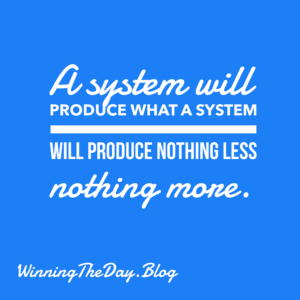Business often throws us into situations where we feel stuck, unsure of the next step. Whether it’s a career decision, a personal dilemma, or just a general sense of being lost, not knowing what to do can be incredibly frustrating.
Here are some strategies to help you navigate these uncertain times:
Focus on Ends, Not Means
When you’re unsure of what to do, it can be helpful to shift your focus from the process to the outcome. Ask yourself, “What do I ultimately want to achieve?” By clarifying your end goals, you can better evaluate the different paths available to you. This approach helps you stay flexible and open to various methods of reaching your desired outcome.
Focus on Your Values
Your values are your internal compass. When you’re lost, they can guide you back to a path that feels right. Take some time to reflect on what truly matters to you. Is it honesty, creativity, family, or something else? Aligning your actions with your core values can provide a sense of direction and purpose, even when the way forward isn’t clear.
Keep Taking Action – Even If It’s Just One Small Step
Inertia can be paralyzing. When you don’t know what to do, the worst thing you can do is nothing. Even a small step can create momentum. Break down your larger goals into smaller, manageable tasks. Completing these smaller tasks can build confidence and provide clarity on what to do next.
Talk It Out/Get a Second Opinion
Sometimes, the best way to find clarity is to talk it out with someone you trust. A fresh perspective can offer insights you hadn’t considered. Whether it’s a friend, family member, or mentor, getting a second opinion can help you see your situation from a different angle and may reveal new solutions.
Trust Your Feelings/Gut
Your intuition is a powerful tool. While it’s important to gather information and consider your options, don’t discount your gut feelings. Often, your subconscious mind picks up on things that your conscious mind might miss. Trusting your instincts can lead you to choices that align with your true self.
Sleep, Hydrate, Rest
Never underestimate the power of basic self-care. When you’re tired, dehydrated, or stressed, your ability to think clearly is compromised. Make sure you’re getting enough sleep, drinking plenty of water, and taking time to rest. Sometimes, a good night’s sleep can bring a fresh perspective and renewed energy to tackle your challenges.
It’s okay not to have all the answers right away. The important thing is to keep moving forward.
Feeling lost or unsure is a natural part of business. By focusing on your end goals, aligning with your values, taking small steps, seeking advice, trusting your intuition, and taking care of your basic needs, you can navigate through uncertainty with greater ease.






